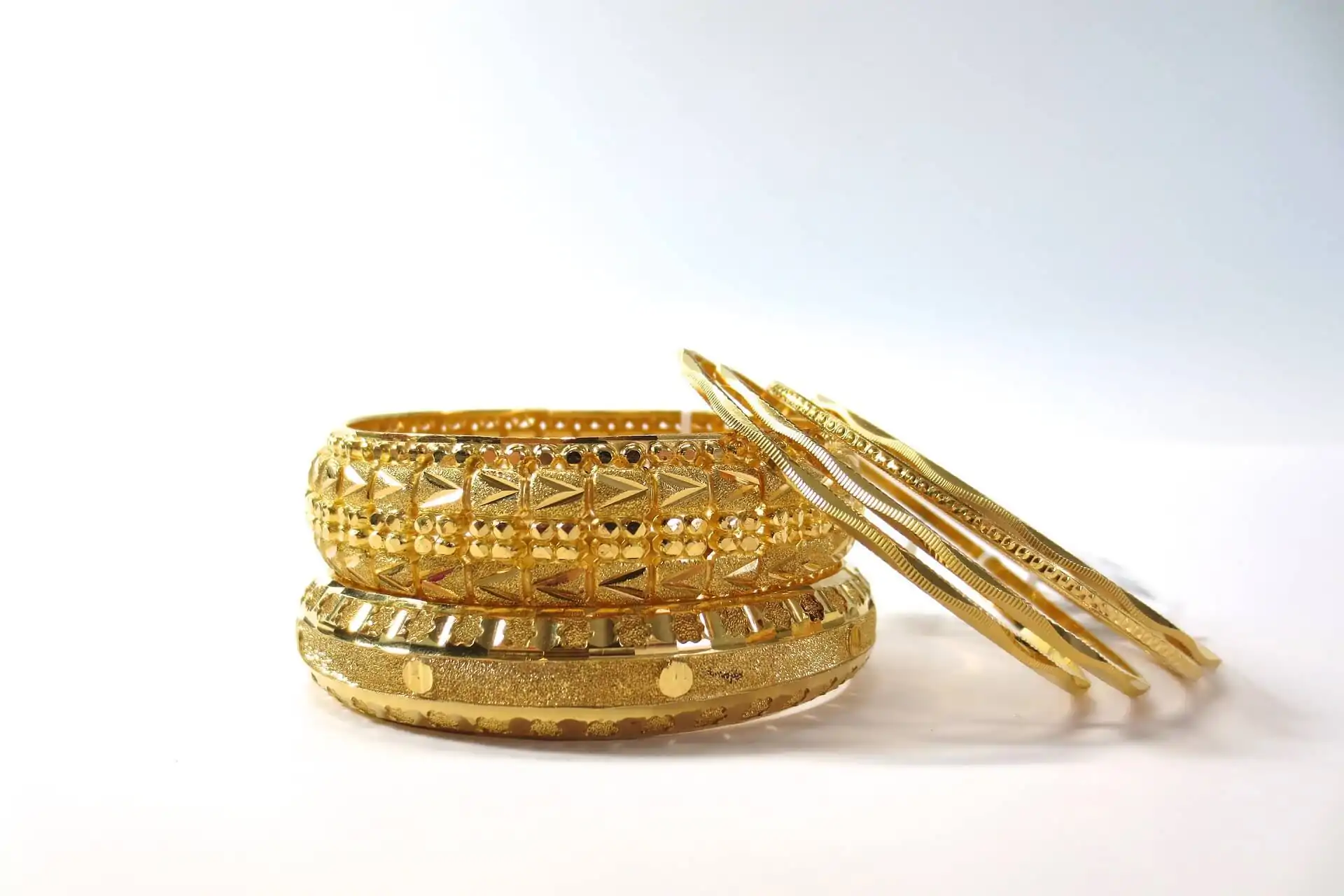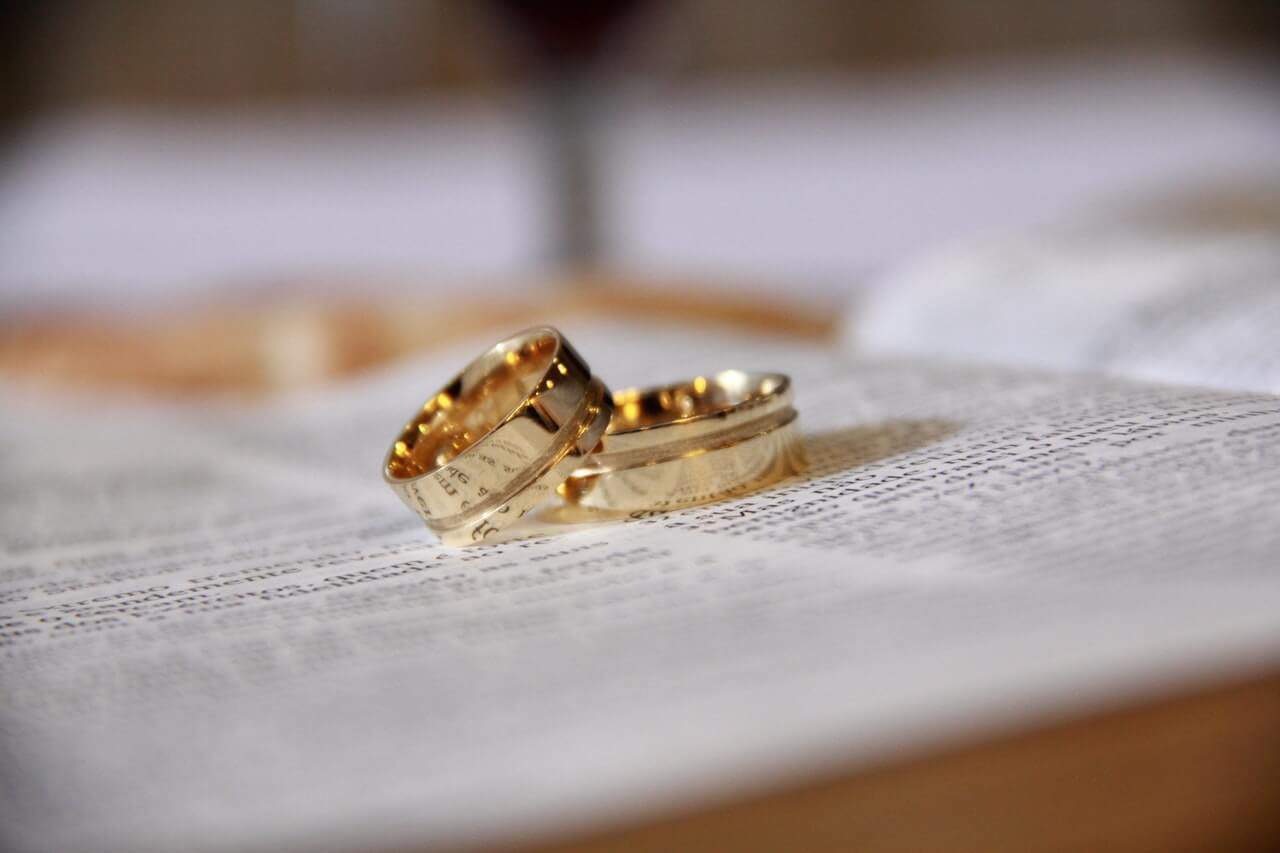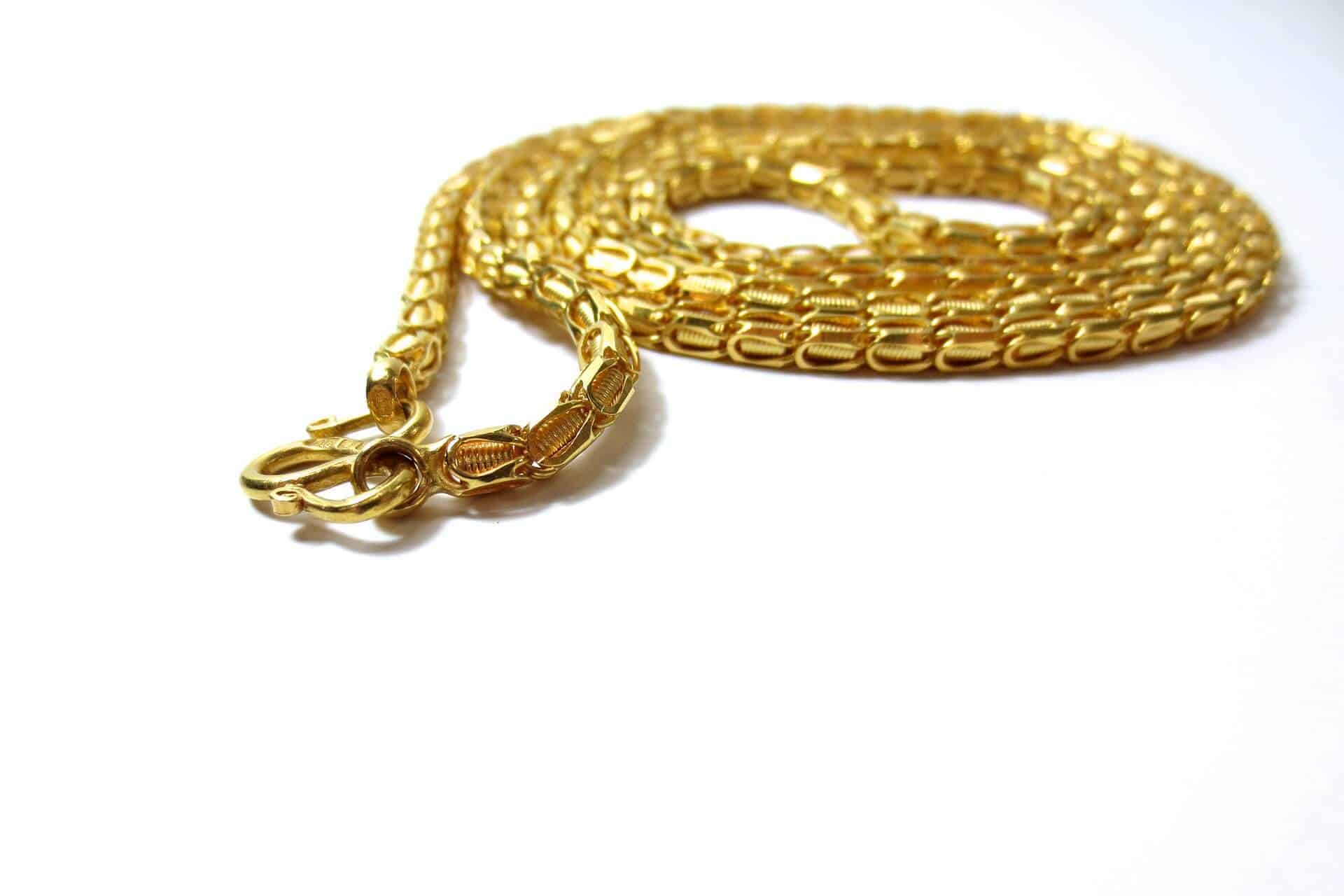
Table of Contents
As Jewelry Shopping Guide editors, we write about things that we love and we think you’ll like too. We often have affiliate partnerships, and may generate some revenue from these links at no cost to you.
It goes without saying that one of the smartest investments in the jewelry industry is gold. Gold exudes luxury and class and signifies financial stability. Gold IS money.
Since the true value of money is backed by gold, this precious metal is in demand anywhere in the world. With inflation and unpredictable rises and falls in the markets, gold is one sturdy protection against these uncertainties.
With so much at stake, knowing how to buy gold is critical before you purchase. In this comprehensive guide, we detail everything you need to know about gold.
Know the purity levels of your gold
If you’ve ever heard the song 24-Karat Magic by Bruno Mars and wondered what on earth he meant by singing about ‘24 karat magic in the air’, it’s because 24-karat gold is 100% pure. Still doesn’t make sense? Ok, moving on.
In every gold alloy, there are 24 units that we refer to as “karats”. When you buy gold that has 24 karats that means you have 100% pure, unadulterated gold which then equals to pure, unadulterated money in your pocket.
By virtue of proportion, if 24-karat gold is 100% pure, 10-karat gold is 41.7% pure (mathematically expressed as 10/24 = 41.7%).
So, the general rule is: The value is of gold is proportionate to its purity – the purer the gold, the higher the value.
But:
That doesn’t mean that you will always have to aim for a higher purity level when you want to buy gold. Consider these two important exceptions:
- Purpose: What is it used for?
Pure gold is very soft and is easily damaged. If you intend to wear it every day, then go for LOW-KARAT pieces. These range around 10, 12, and 14 karats. Low-karat pieces are made of gold and other metals that make the alloy stronger.
For rings and bracelets which are exposed to friction against hard surfaces, it is best to buy 10 and 12-karat pieces.
For necklaces and earrings which are safe from knocks and bumps, 14 – 18 karats are suited.
HIGH-KARAT pieces that range from 18-24 karats are best for special occasions, parties and ceremonial events for two reasons:
One, your gold is rarely used and when you use them, they are handled carefully – avoiding unnecessary damage. Two, you get to low-key humble-brag about your elegance and wealth. Ok, that last isn’t actually a reason.
- Compatibility: Ask “Is this golden alloy “good” for me?”
Apart from the purpose of the jewelry, other special cases should also be considered.
Gold jewelry may contain metals other than gold. One of the most common metals mixed in a golden alloy is nickel. It makes the jewelry stronger but it is an issue for people with nickel allergies.

If you are allergic to nickel, then it is better to choose jewelry with a higher percentage of gold content. 18 karat purity is recommended for you.
Evaluate the quality of your gold
Not all that glitters is gold…literally!
Just because your jewelry looks like it is made of gold doesn’t mean it actually is. There are very few exquisite pieces of gold jewelry that are made of 24-karat solid gold (100% pure gold). But there are what we call gold filled and gold plated jewelry and you need to know the difference if you want to buy gold.
Gold filled jewelry is, as the term implies, filled with gold.
As we have already mentioned above, the metallic mixture we call an alloy is made up of gold and other metals combined to create a tougher metal.
Shoppers generally prefer gold alloys over gold-plated jewelry for various reasons:
- This is the second most valuable type of golden jewelry next to pure 24-karat gold.
- They do not tarnish, fade, chip or change color overtime apart from the occasional need for cleaning – they are even considered “lifetime” products because they do not wear out.
- In some countries, the government regulates the trading of gold-filled jewelry which means that your investment is well-protected.
Gold plated on the other hand are made of non-gold base metals that are then dipped into molten gold to create a golden coat on the surface. This is a budget friendly alternative to gold-filled jewelry because:
- The plating is usually very thin and will wear off easily.
- The sale of gold-plated jewelry is loosely if not at all regulated.
- They are readily available on the market.
A special kind of plating called vermeil uses the same process but on a specific base metal, sterling silver. Vermeil has similar perks to other gold-plated jewelry but is friendlier to users who are allergic to nickel.
Know your alloys and colors
Pure 24-karat gold appears yellow but it isn’t always practical to purchase pure gold because it is soft, malleable and expensive.
This is why, as we’ve discussed, jewelers have come up with a method to mix gold with other stronger metals. Since these items are usually not more than 18-karat gold, the other metals influence the yellow color and yield an alloy with a different color.
When buying gold, you are not only limited to the golden yellow color. Here are some of the colors of gold you need to know:
- Yellow gold – This is the color that comes to mind when we say gold. In fact, the word ‘gold’ is in our vernacular as a color, likened to honey or sunshine. However, not all gold yellow jewelry is actually gold. As you know, plating is common to golden jewelry and sometimes it is intentionally done to keep the yellow gold appearance
- White gold – This looks like a brighter version of silver. It is as popular as yellow-gold for engagement rings. White gold is sometimes paired with yellow-gold in items more commonly known as two-toned. White gold is made of white metals (i.e. palladium, nickel or manganese) that are stronger than gold.
- Rose gold – A gold alloy with a pinkish hue, rose gold has become an engagement ring sensation! To achieve the pink blush, copper is added to gold, often 14 karats or 58.5% purity. The highest karat version of this alloy is known as Crown Gold, made with 75% gold and 25% copper.
- Green gold – This is one of the rarest varieties that is made of gold mixed with silver. It comes with a bright greenish yellow hue and compliments green stones like emerald and peridot extremely well. Green gold is mostly produced in labs but is very rare and very expensive. Green gold known as “electrum” can be mined naturally. Only very few jewelers are privileged to see them so this isn’t something you would typically come across when gold shopping.
Buying your gold jewelry wisely
Now that we’ve covered the different qualities of the different types of gold, it is time to buy! This begins with finding a retailer.
Finding a vendor
To select the right dealer, consider these tips:
- Go to reputable jewelers. The easiest way to find quality gold is to go to already known and trusted shops like Cartier, Tiffany, Graff and the like. They have solid reputations as trusted dealers who sell products that are of a high caliber. But these stores put substantially higher premiums on their products so that can turn many buyers off.
- If you are looking for a budget-friendly purchase, seek out independent dealers who also sell exquisite pieces. Just be wary about who you are dealing with. You can make sure that you are transacting with a reputable dealer by checking their credentials and certificates.
- Always compare. With independent dealers, a piece that can be found at one outlet for a certain price can probably be found at another outlet for a lower price. Always scout for other stores and compare prices. Yes, it may sound ideal to impulsively purchase jewelry, the one that immediately speaks to you. But the truth is, you can probably find the exact same item elsewhere and at a much more economical price.

One of the reasons why bigger companies like Tiffany & Co. add a very high premium to their products is the exclusivity of their designs. You won’t find a ring made by Tiffany & Co. at a Cartier outlet.
Pricing and quality markings
Gold prices are determined mainly by purity. But how can you know what the purity of the meal is? Here are some tips:
- Unless you have a readily available lab or have powers of microscopic vision, look for the hallmark.
These are unique markings that are mostly found on inconspicuous parts of the item (i.e. inner circle of the ring, backs of earrings).
Some markings will indicate the karatage, which indicates the gold content, while others would put the percentage of purity. You may refer to the table below for the most common purity markings used around the world:
| Karatage | Percent Pure Gold | Karat Mark | European Mark |
| 10-karat | 41.70% | 10K | 417 |
| 14-karat | 58.30% | 14K | 585 |
| 18-karat | 75.00% | 18K | 750 |
| 24-karat | 99.99% | 24K | 999 |
- Look for a hallmark that indicates the gold quality. They could answer important questions like: Is it real? What is it made of? Below are the most common quality markings used worldwide:
Type of alloy: GF – gold filled, GP – gold plated
Base metal used: Pd – Palladium, Pt/Plat – Platinum, SS – stainless steel, S. Silver/Silver – Sterling Silver
- Calculate the fairness of your purchase. What is the golden rule in calculating the cost of gold? How do you know if you’ve been duped? How do you make sure that you are making a fair purchase?
Hang on to your thinking hats, because we’re about to get mathematical:
- First, know the gold bullion price. This refers to the market price of gold and it changes every day. To guide customers, jewelers display the daily bullion rates. 24-karat pure gold is sold in ounces while non-pure karat jewelry is typically sold in grams.
- Compute the price of “how much” gold you have. If for example, you see an 18K piece of gold weighing 20g is priced at $1300, is that a good price?
Let’s see. Assuming that gold is selling at $42.19 per gram, then the cost of your gold is $632.85: (18/24)*20*42.19 = 632.85.
But you are buying the item for $1300! Is that fair?
Keep reading for the answer…
- Consider other costs. It is expected that jewelers will add on costs of other metals in the alloy plus labor. The general rule is that you will pay at least double the price of gold to include these costs, PLUS the jeweler’s profit margin. So $1300 is more or less a fair price in our example.
You can expect to pay even a higher cost if the jewelry is custom-made for you. In this case, you are not just paying for the gold but for the design. If your seller is among the top-tier jewelers such as Cartier or Bulgari, they could sell an item at as much as ten times the value of the weight of gold. This is because along with the gold, you are purchasing the reliability of the product’s quality, the design which is usually made by notable jewelry designers, and of course the brand name.
Clear your doubts on the purchase
Clearing your doubts doesn’t mean thinking positively and just leaving the fate of your jewelry to luck and complete trust. On the contrary, you have to be vigilant about your purchase especially when you are doing business with independent dealers.
But how to do this?
- One way to deal with your doubts is to hire an independent appraiser. You would want to make sure about the quality of the product, especially if it doesn’t a hallmark. Of course real gold will almost, if not always, have a hallmark, but there is no harm in asking for a second opinion.
- Ask for a warranty especially if your purchase is high risk or very expensive. Jewelers of integrity will offer a warranty to back the quality of the product they are selling. This will be added to the cost of your purchase but it is worth protecting the value of your investment.
Taking care of your gold
When you have already bought your gold, it doesn’t stop there. If you do not take good care of your jewelry, you might as well be setting money on fire… a bit dramatic but bear with us.
Remember the following tips, and your gold will be in good hands.
The dos and don’ts of gold usage
- For high-karat gold, use the items less frequently. Gold, especially pure gold, might be valuable but is soft and easily damaged.
- Remove your jewelry before bathing, swimming, gardening and cleaning. Harmful chemicals found in soaps and detergents can wear off the gold especially if the item is gold plated. Unintentional stress like friction from wringing and brushing can easily damage the gold.
- Avoid wearing gold items to pools and beaches. Apart from high saturation of chlorine or salt, the last thing you want is losing a tiny piece of metal in a vast body of water.
- Finally, ensure proper storage. It can be done through the following:
- When not in use, store your gold jewelry in separate boxes, or in separate compartments in a box.
- If such storage is not available, wrap them in individual pieces of clothing to protect each piece of jewelry from scratching each other especially if you have a diamond in the lot.
- For gold chains, store them in boxes where they do not tangle with other jewelry or with itself. Knotted gold chains are a pain to untangle and sometimes doing so may break them. If you do not have a custom box for loose necklaces and bracelets, store them in a way where you can hang them.
Cleaning your gold
Cleaning your jewelry doesn’t have to be done very often. Sometimes, a simple dusting can be enough.
So, when should you do it and how to do it? Here are some tips:
- You can occasionally buff your jewelry with a thin piece of soft cloth. Rub it gently to remove oil and dust. This way you avoid buildup of grime on the surface.
- Cleaning your jewelry with liquid detergent mixed in warm water:
- Fill a bowl with soapy mixture and soak the gold jewelry for ten to fifteen minutes.
- If your jewelry has a stone or has intricate patterns, use a Q-tip to clean the gold instead of soaking. This way you target the unwanted grime while protecting the stone. For pieces with deep crevices, you may use a soft-bristled brush to get rid of the dirt
- Afterwards, rinse it in warm water and dry with soft cloth.
- Deep cleaning is recommended once every three months. This type of cleaning should be done only a few times a year to avoid the chemicals from wearing out the gold. Follow the steps below and your gold should turn out good as new:
- Soak your jewelry in a cleaning solution for three hours. For pieces adorned with precious stones, check if the cleaning solution is suitable for the stone as well.
- Clean each piece with a Q-tip or a soft brush the way you would when cleaning with ordinary soap.
- Wash with warm water and pat dry.
Always remember, gold is more than just an ornament or a fashion statement. Gold is as good as money, with prices always on the rise, and for the foreseeable future, this will not change.









